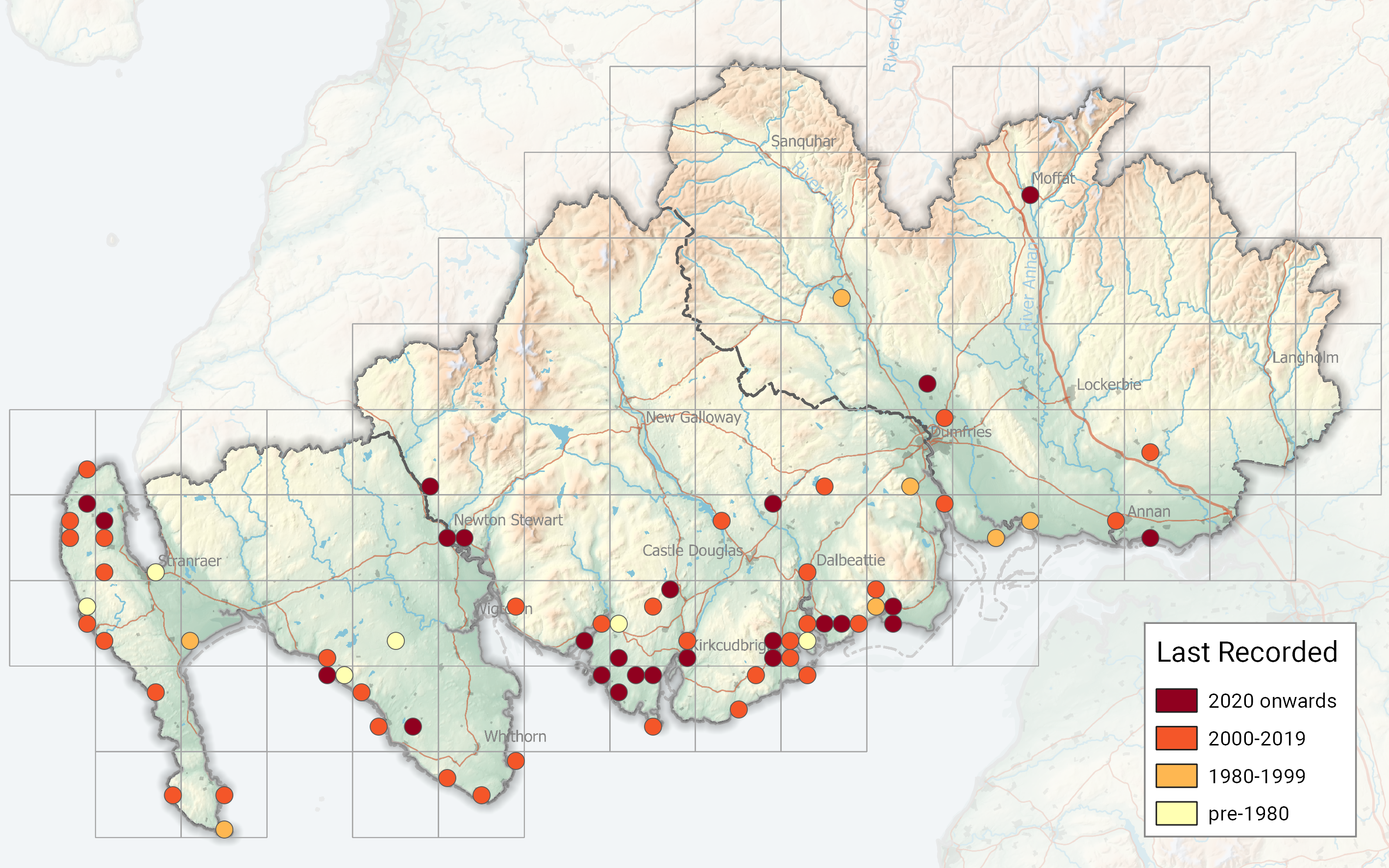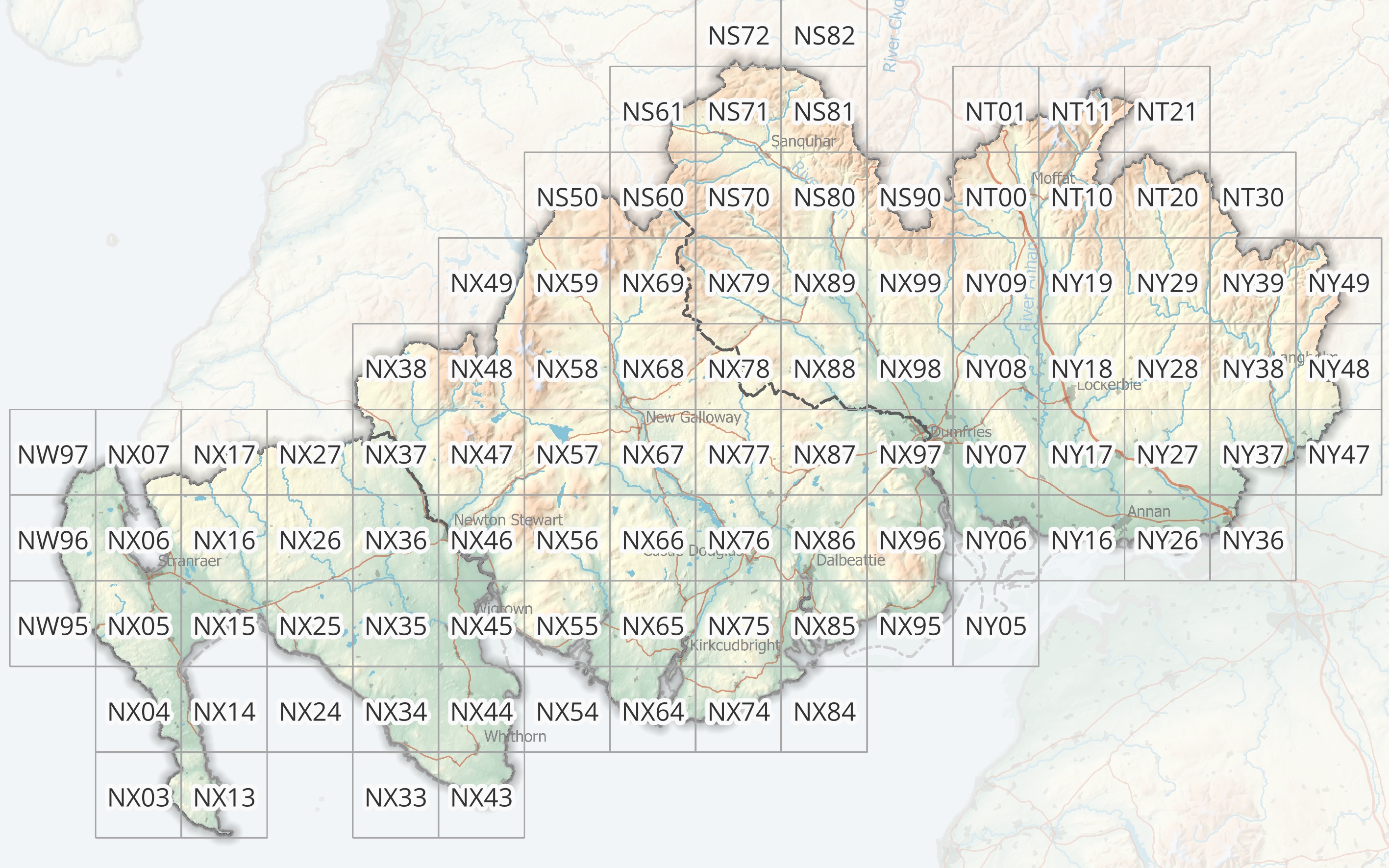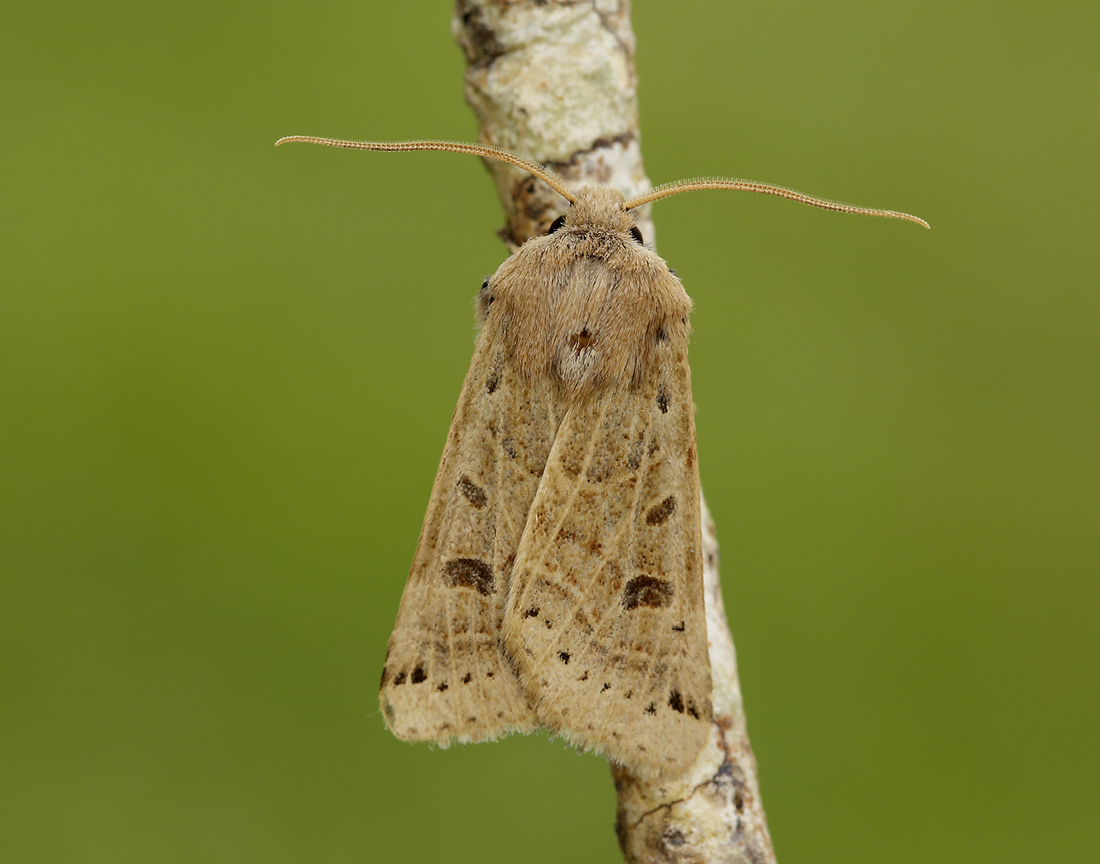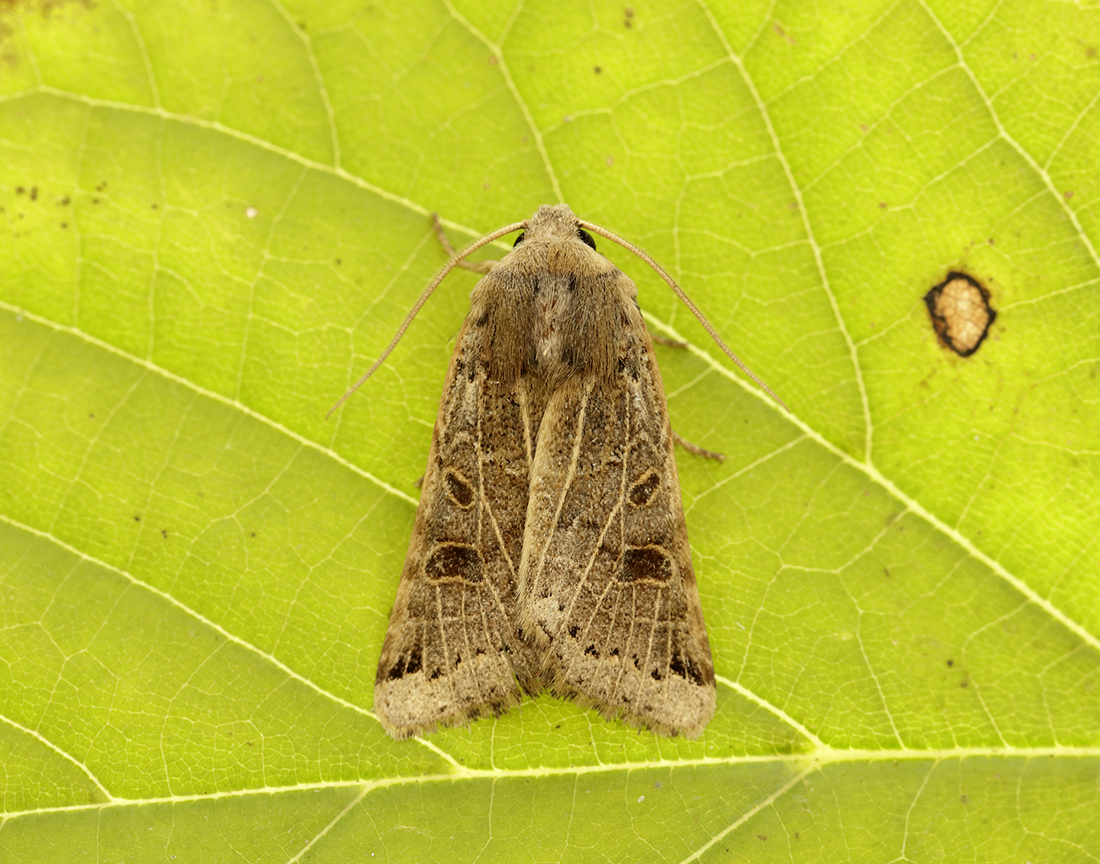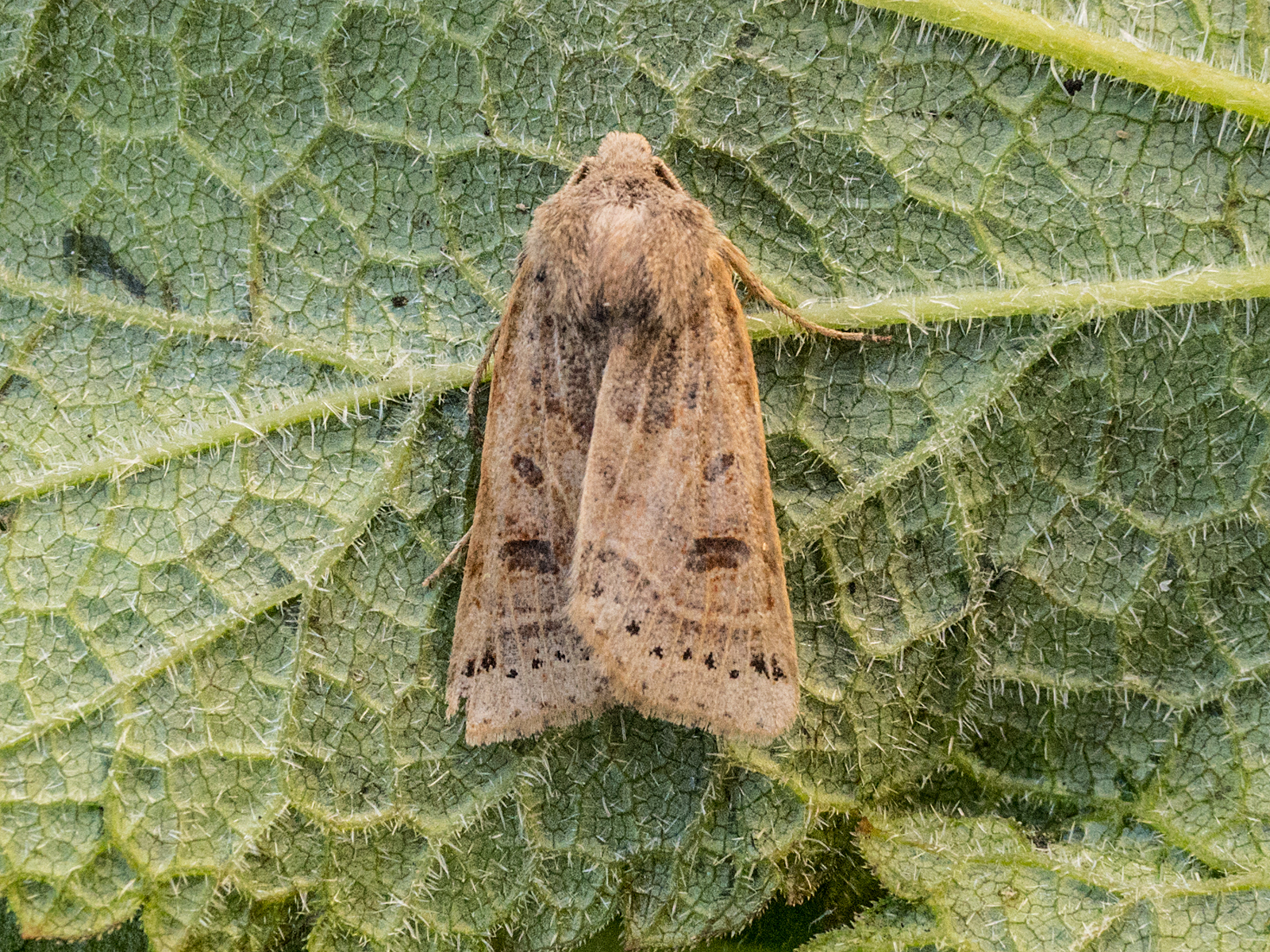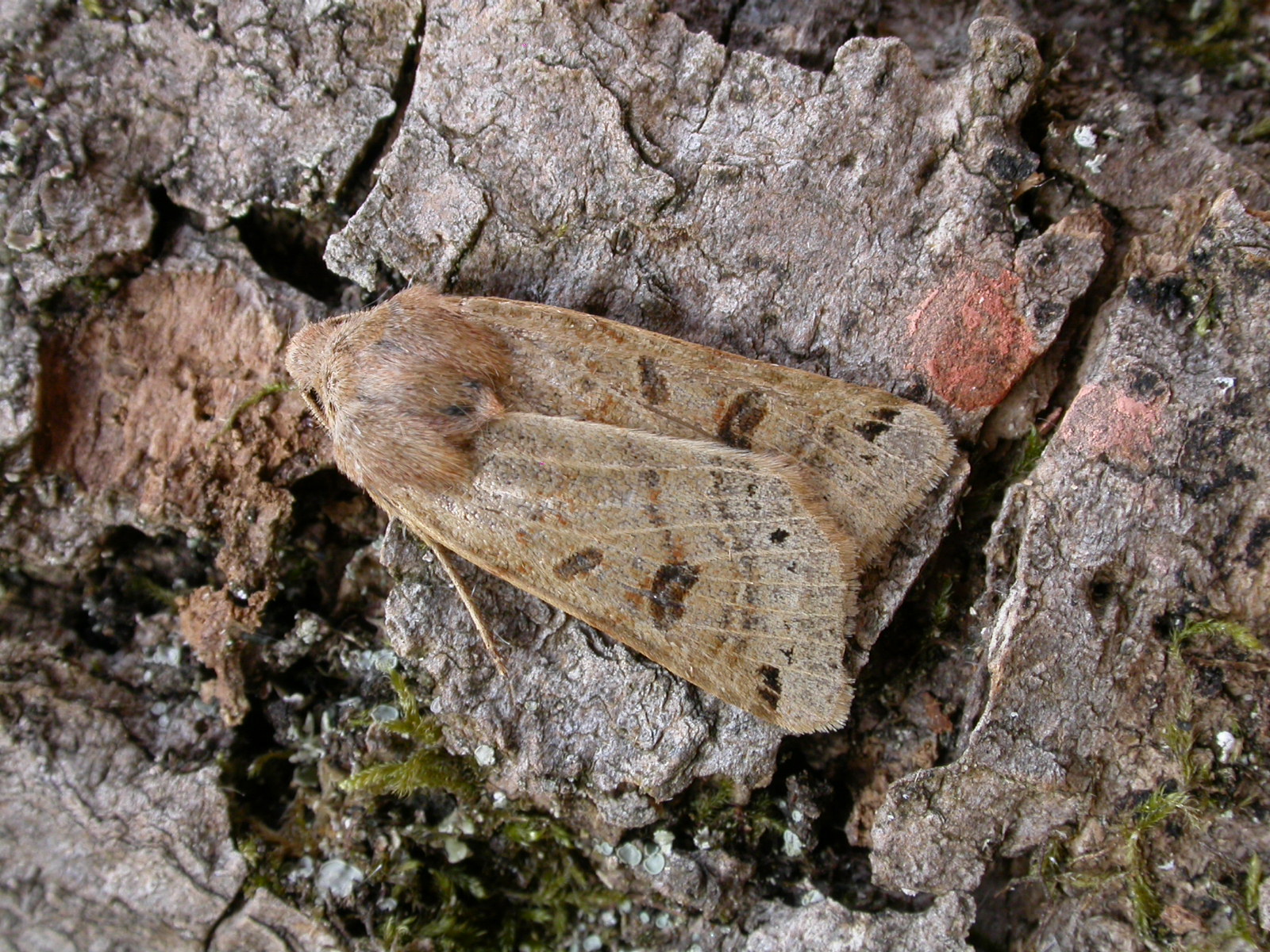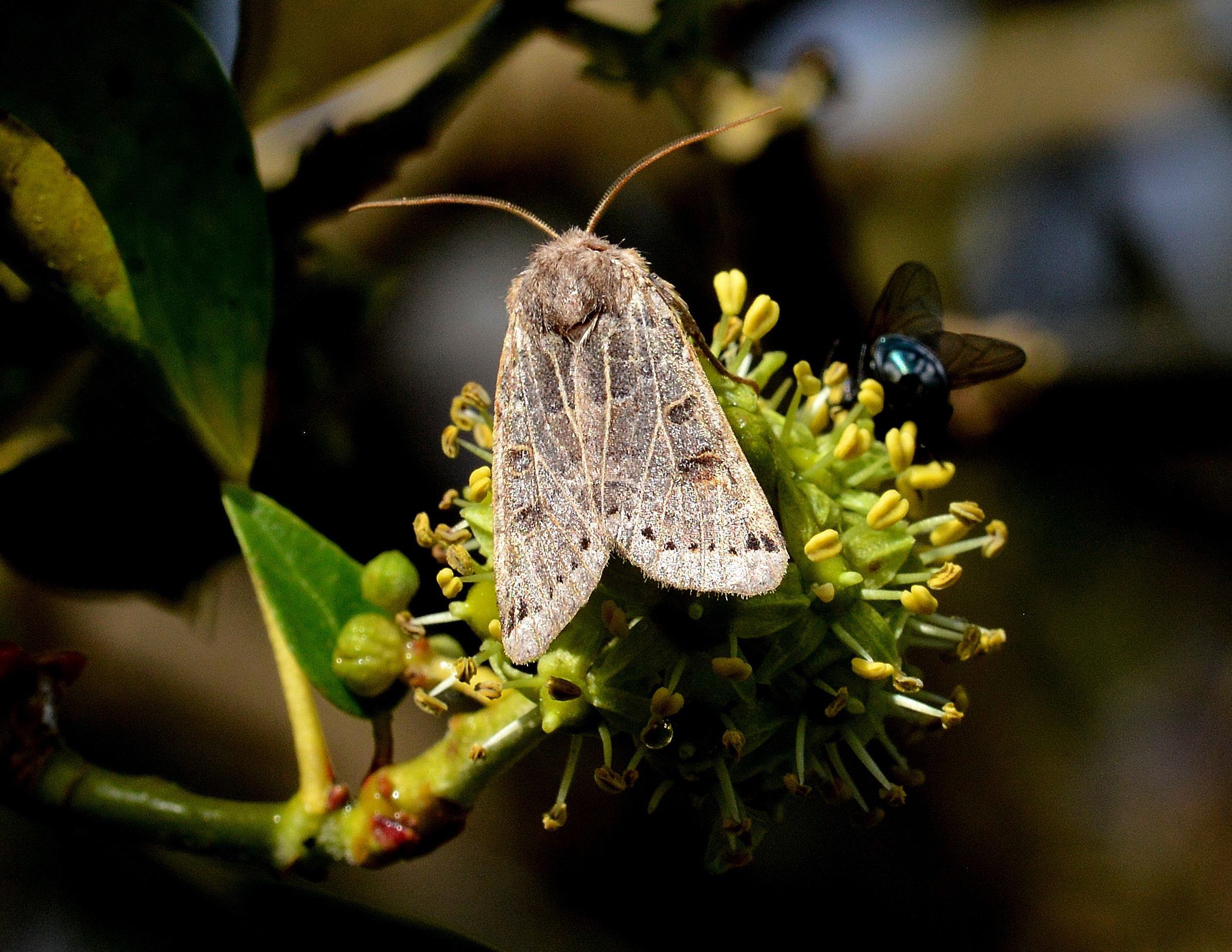Identification
The hindwing has the diagnostic feature of a dark crescent moon, but otherwise the forewing colour is very variable.
Recording Method.
Attracted to light, also comes to sugar and flowers.
Life cycle
One generation. Overwinters as a small larva, during October to May.
Larval foodplants
Grasses.
Habitat
A wide variety of grasslands.
History
Lennon (1863) had found it on the Tinwald Downs (VC72). Douglas Robinson (1870-71) had found it at sugar in September on Almorness (VC73). Gordon (1913) thought it was local and variable. He had records of several attracted to a window at Alticry House on 29th August 1909 and one on a sugared post on the moor around Corsemalzie on 7th September 1910. Several larvae were captured on Garheugh shore, Luce Bay (VC74) on 1st May 1906, and one was bred on, emerging on 28th August 1906.
During 1976 the Rothamsted station at Caerlaverock recorded it, with singles at Gatehouse of Fleet in the same year and one at Waterside Mains at Keir in 1982. Further records came from Mabie Forest station during 1989-92.
A number of records were recorded from Kirkton, Kippford, Mersehead RSPB and Cally Woods during 1989-2010, with other records from widespread sites across the region.

